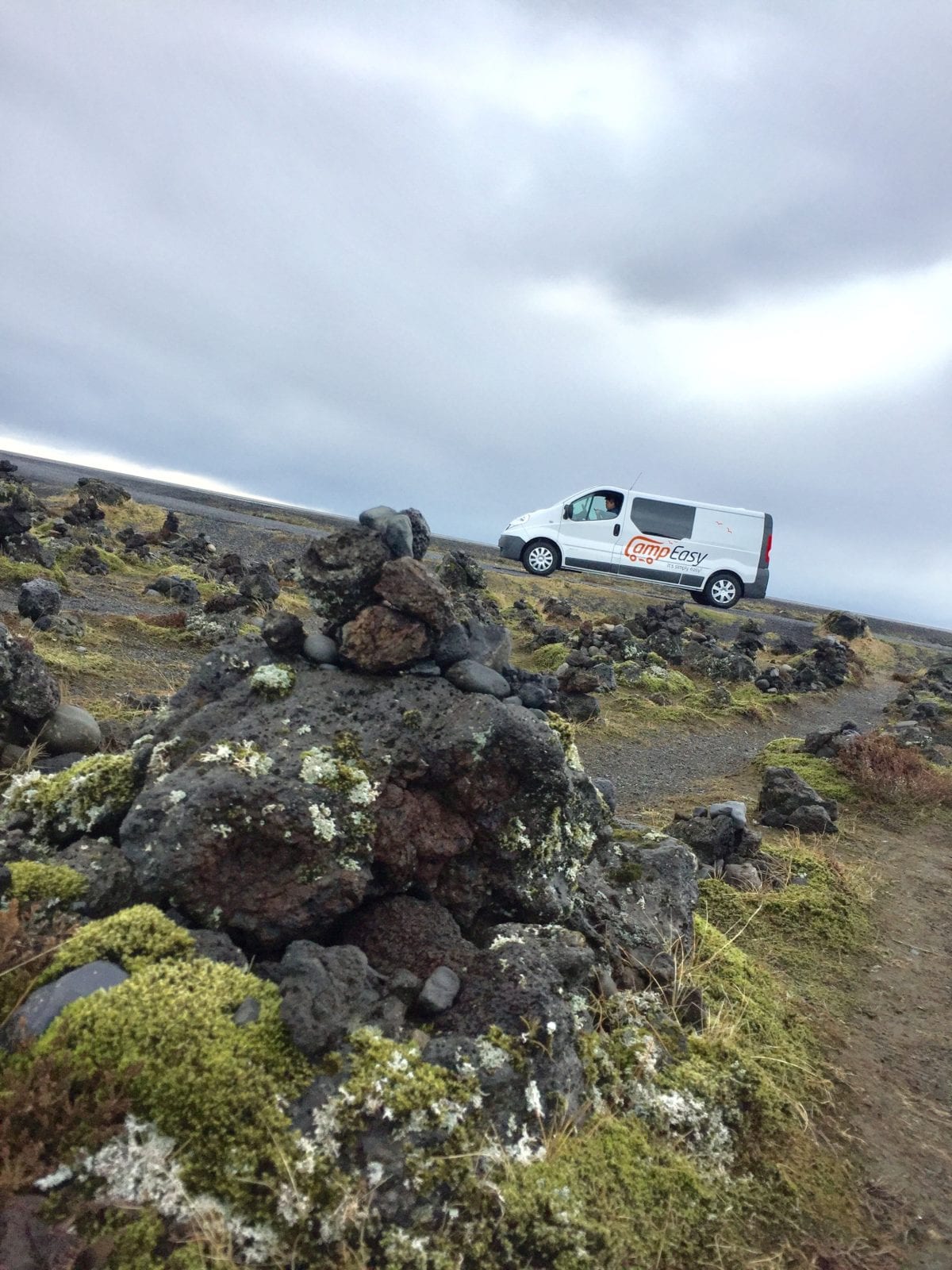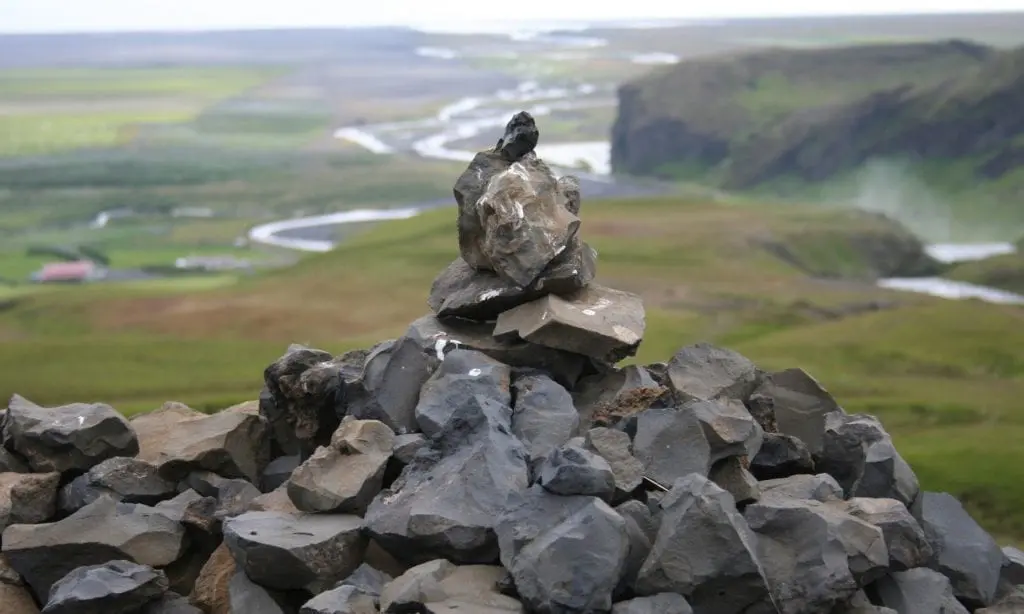I can honestly say that Autumn in Iceland is one of the most magnificent seasons. Driving on empty roads with fresh snow-dust covering the highest peaks of Icelandic Mountain ridges. Combine that with playful autumn colours which creates a vibe that is extremely hard to forget. Next, mix all that with Van-life and have a taste…
Cairns are man-made piles of stones, and you´ll probably notice them when you drive around Iceland. They vary in size and shape, ranging from randomly piled small rocks to very tall and well-put-together structures. They’re usually made from lava rocks.
Why are there cairns all over Iceland?

Icelandic people traveled on foot or horses between places back in the day. There weren’t any roads, and there were few paths apart from those trodden down from roaming sheep. So, when settlers arrived, they built cairns to help people navigate the harsh landscape. Of course, people didn’t have maps or compasses, and they’d often have to find their way in the thick fog, snow, or rain. So, the cairns were extremely helpful.
When people traveled, they followed the cairns to their destination. Some of the cairns were large enough to provide people, and their horses shelter during storms. So, it’s safe to say they were lifesavers in those times.
You don’t want to mess with it
Not only is it illegal to disturb the large, old cairns, but you’re also not allowed to make new ones. Because even though they are mostly historical artifacts today, they are still used by hikers. If you build new ones, they could confuse the hikers and lead them astray. The Icelandic highlands are formidable, and no one wants to be stranded and lost there.

Beinakerlingar – Bone-cairns
One type of this art is called Beinakerling or a Bone-cairn. They are so named because of the small pieces of paper with stanzas or limericks people left in them. The poems were called “beinakerlingavísur” or the bone cairns stanzas.
Travelers used to leave these stanzas behind for others to enjoy on their travels. The name of these cairns comes from the tradition of leaving the stanzas inside a sheep bone stored inside the cairn.
The stanzas were often pornographic or ambiguous. It was not uncommon for the authors to write about specific people, especially if they knew the person would travel past the cairn in the next few days. Some were written like a woman was describing their desires for the men who were traveling by.
One such poem was written to the bishop of Hólar, and is from the 18th century:
My dear lord from Hólar
You will have plenty to do
In bed with me
As it should be.
I’ve lost both strength and will,
Denied many friends,
I lie awake
Waiting for the bishop.
National park staff tries to protect ancient cairns in Þingvellir
In an interview with Iceland Review, members of Þingvellir’s staff raised concerns about the disturbance of ancient cairns in the national park. According to them, it’s a problem when travelers build on top of ancient cairns or take other pieces from them. These rocks are a part of the park’s landscape and should not be disturbed. However, making new cairns is also strictly prohibited, and the staff regularly spends time knocking down freshly built cairns inside the park. The staff says they realize park visitors mean no harm by building cairns but wish to spread the word that it’s not allowed.
Please don’t take home rocks as souvenirs
We know some of them look very cool, and you’d like to keep some of them as free souvenirs. But please don’t! It’s actually against the law. Icelandic nature is very fragile, and the slightest disturbances can have a significant effect. Just think of it as a small-scale butterfly effect.
Other Blog Articles
Welcome back to yet another weekly report. We start today like in Alfred Hitchcock’s movie: with an earthquake. A magnitude 3 quake struck at Mýrdalsjökull on Sunday, just before 5 a.m. According to Kristín Jónsdóttir the earthquake hazards coordinator, earthquakes are normal at this time of the year there, as there are cavities in the…